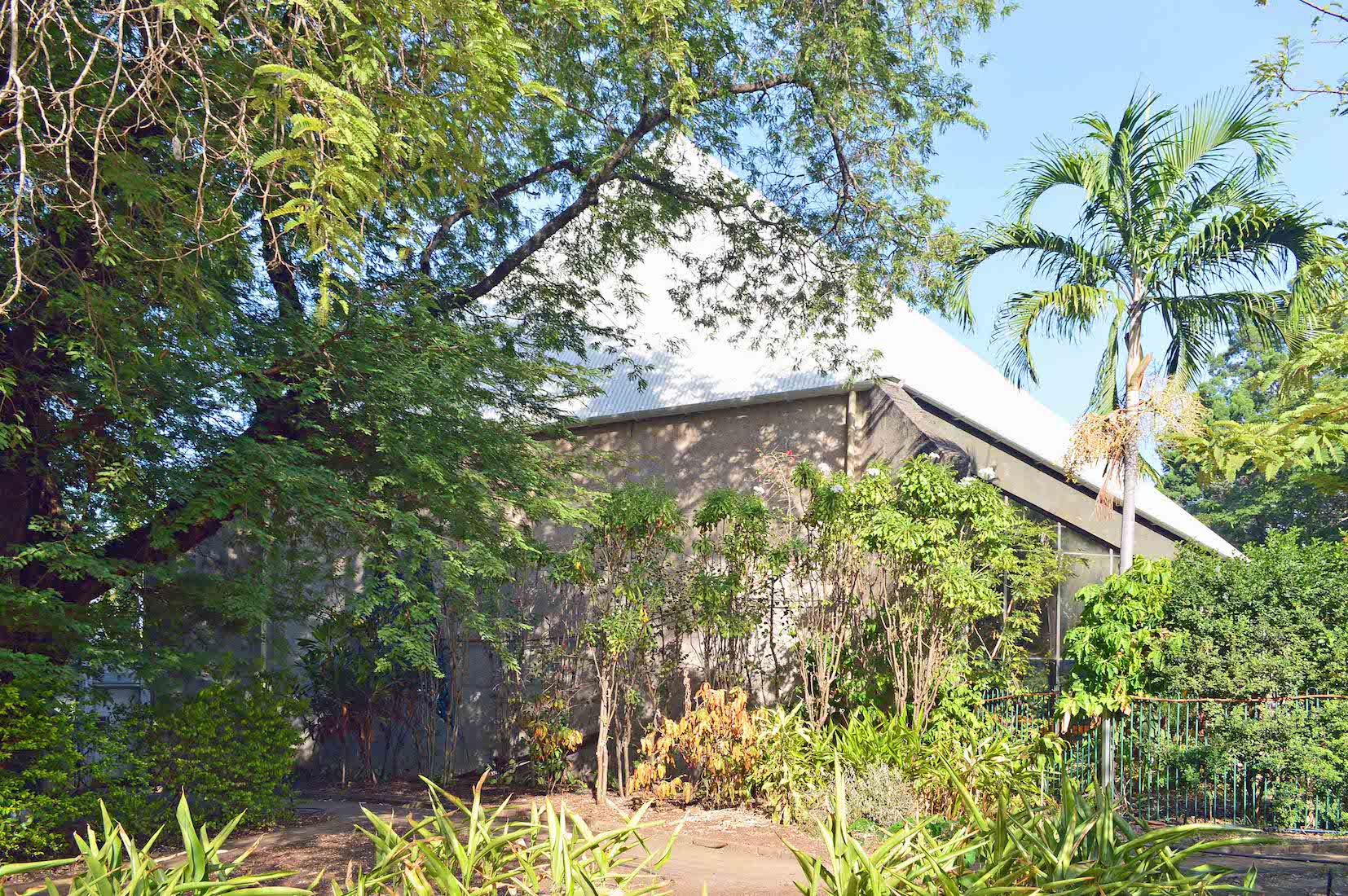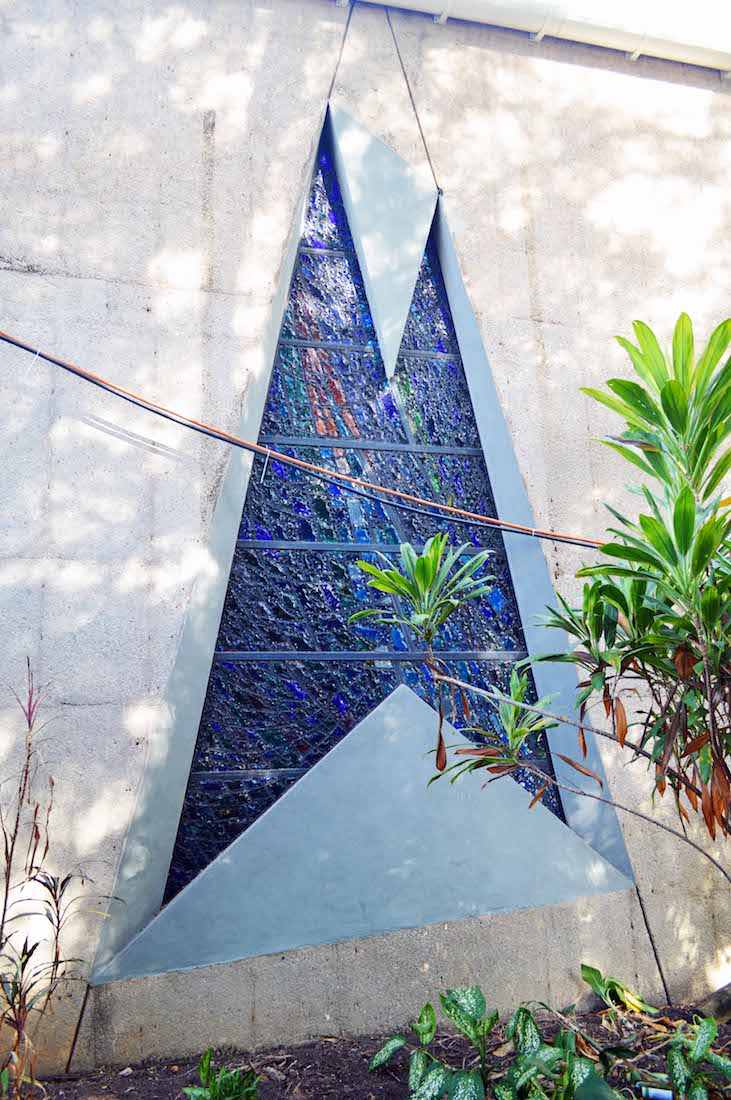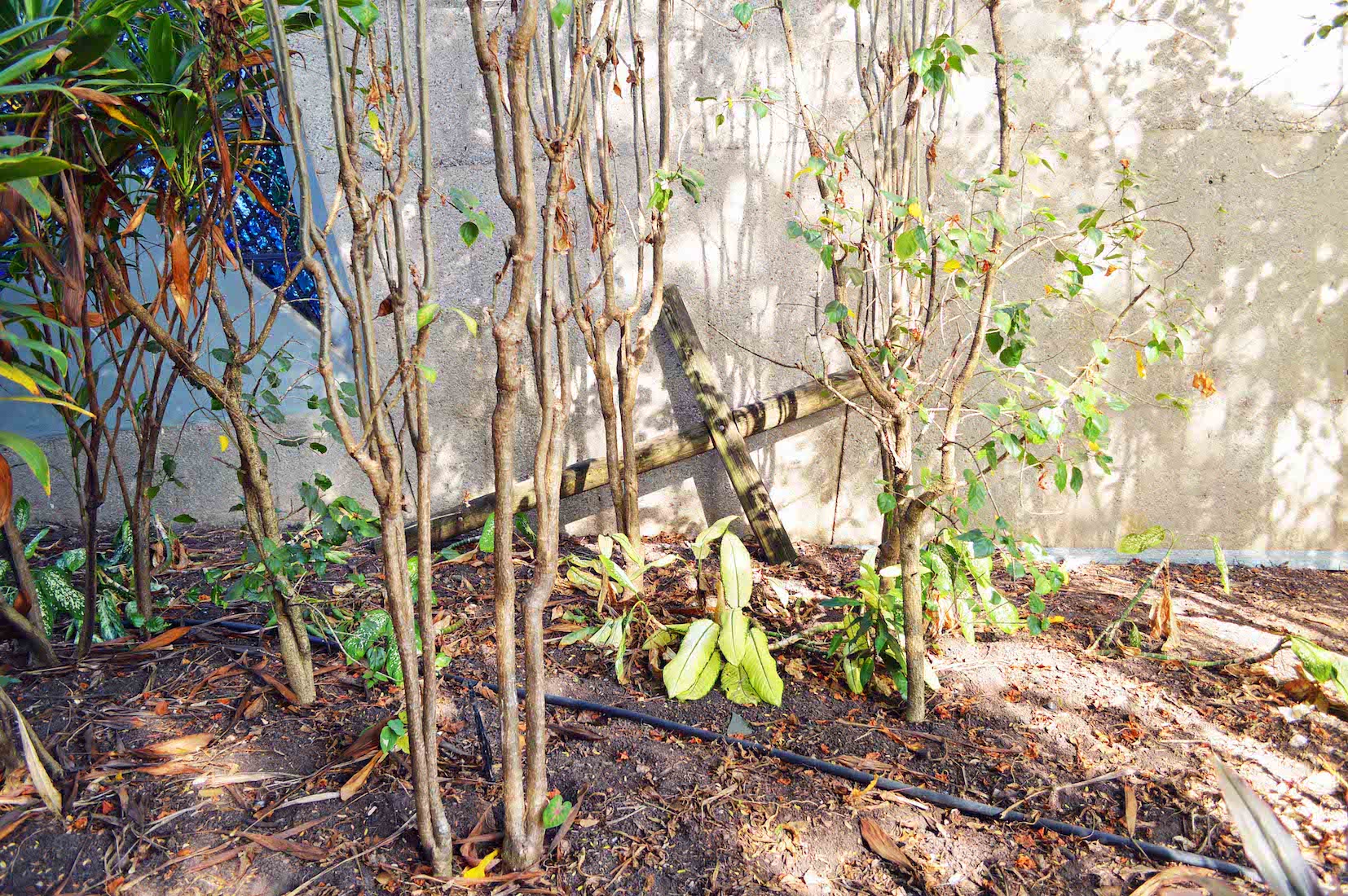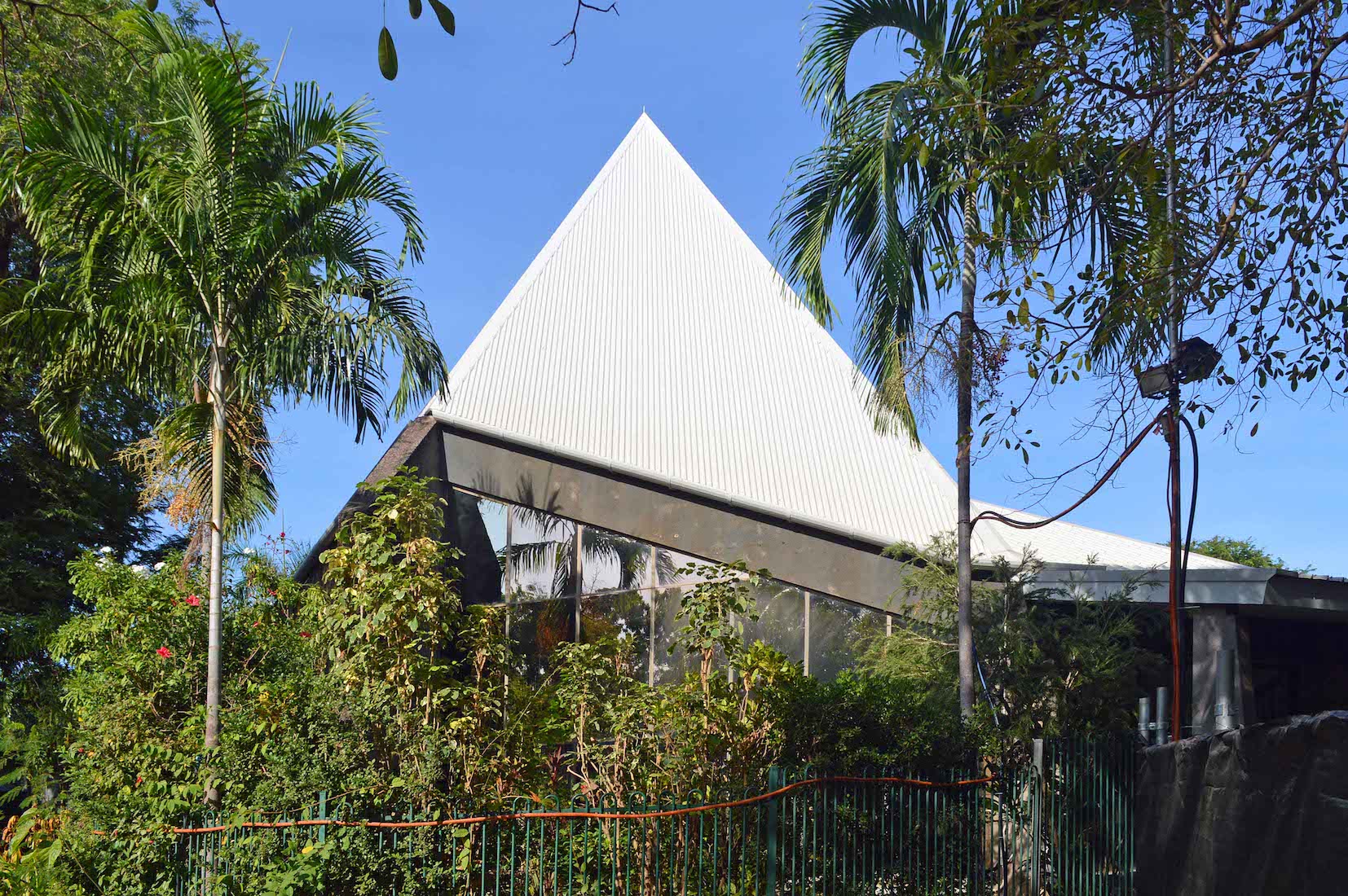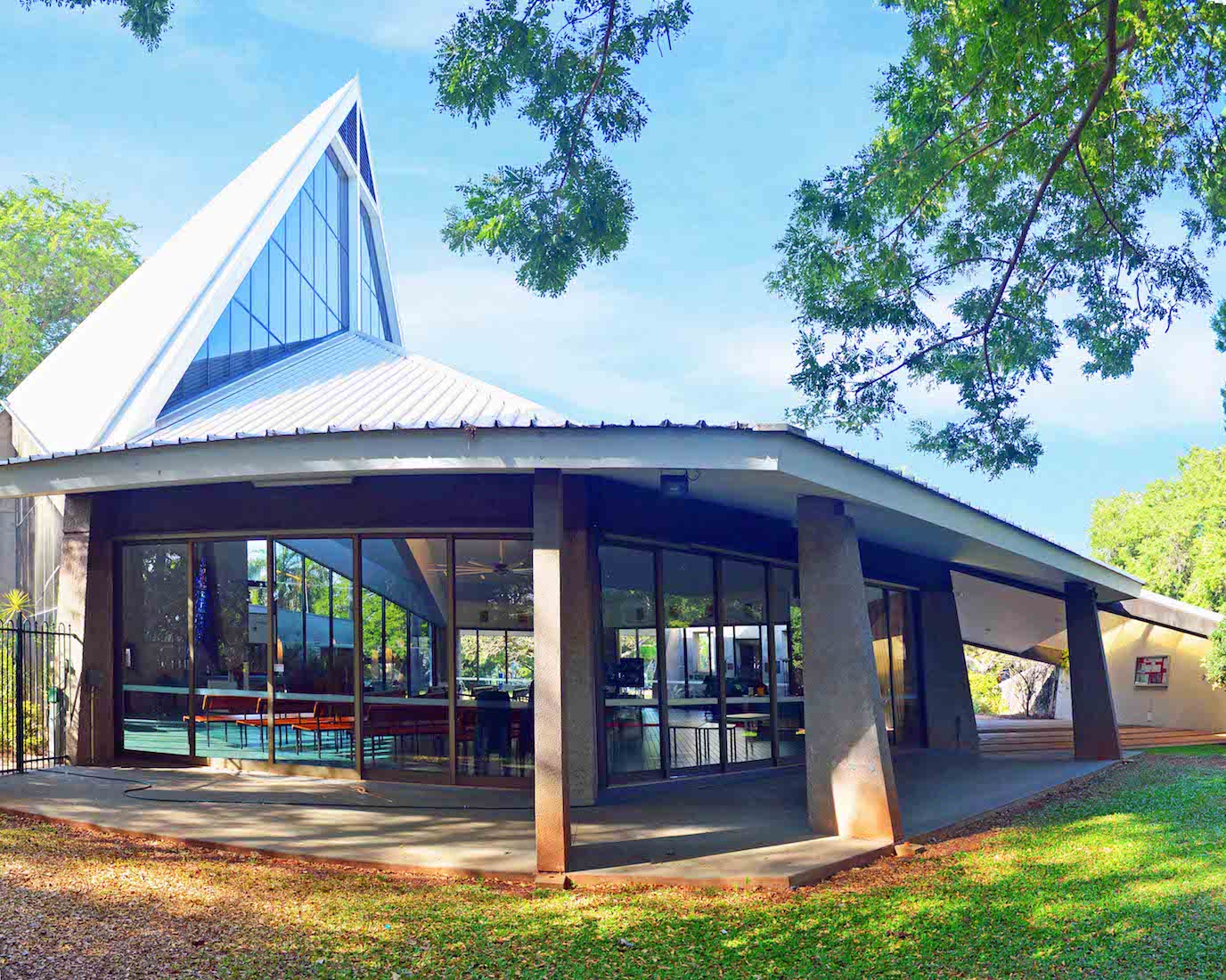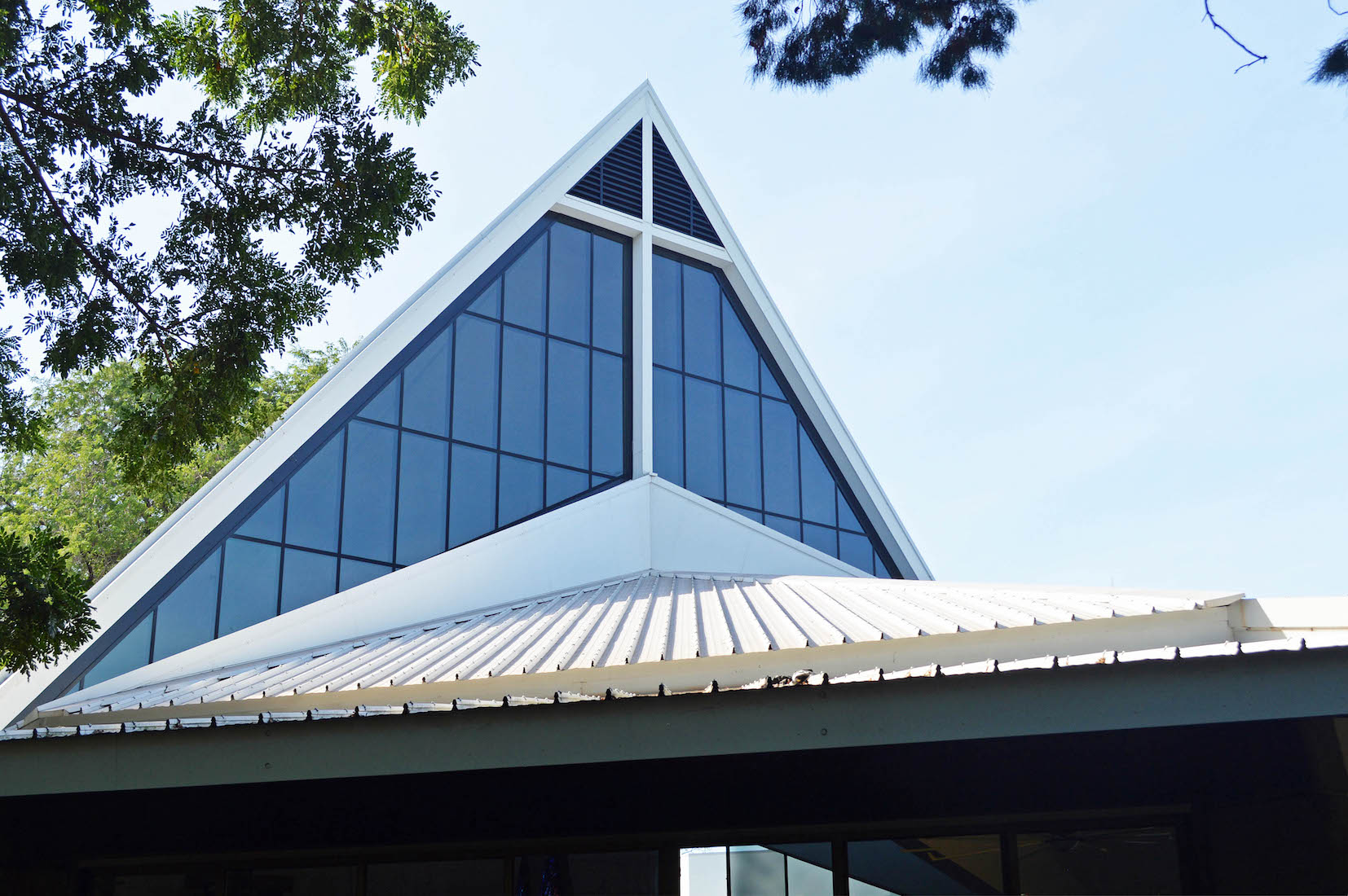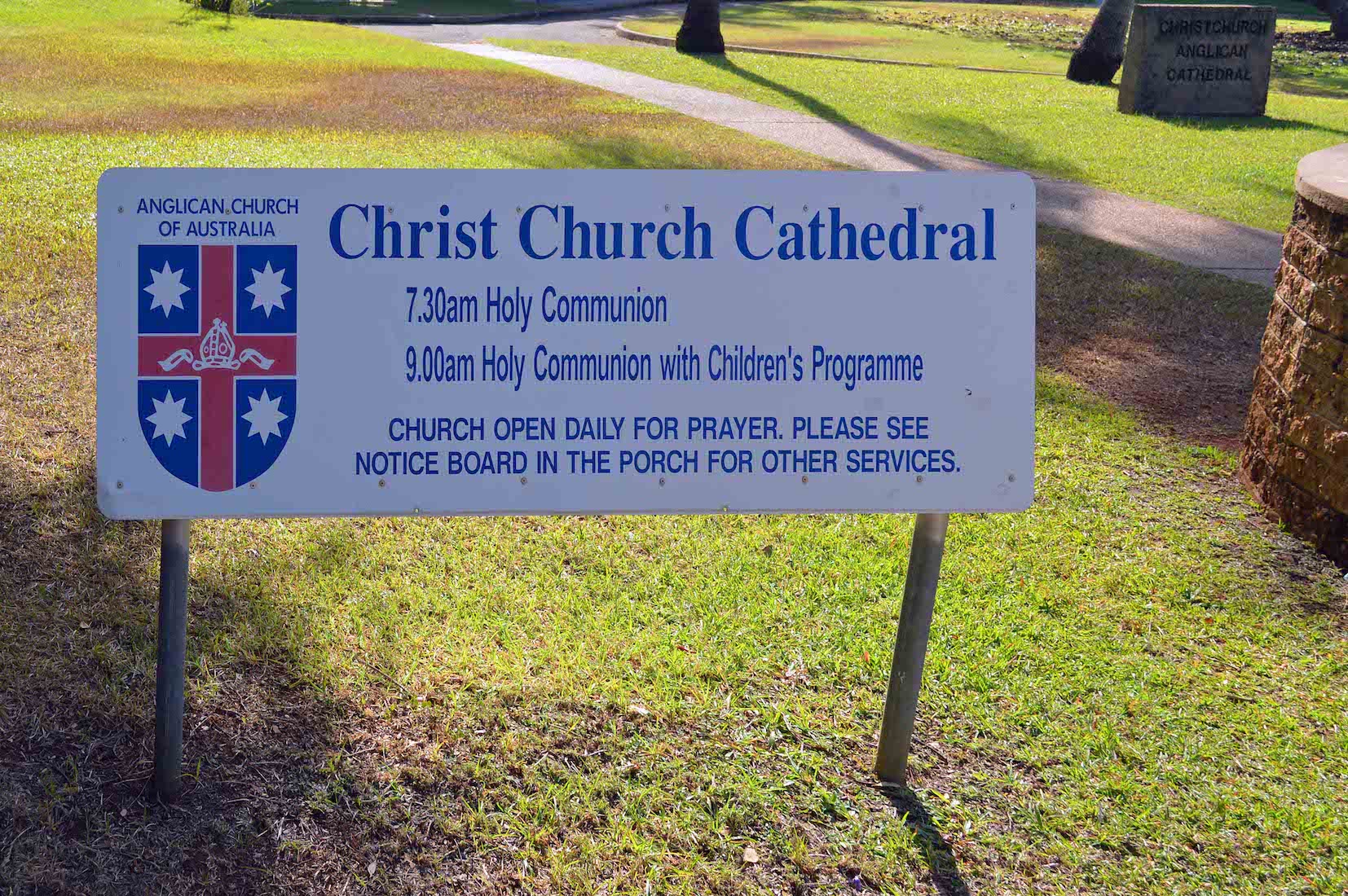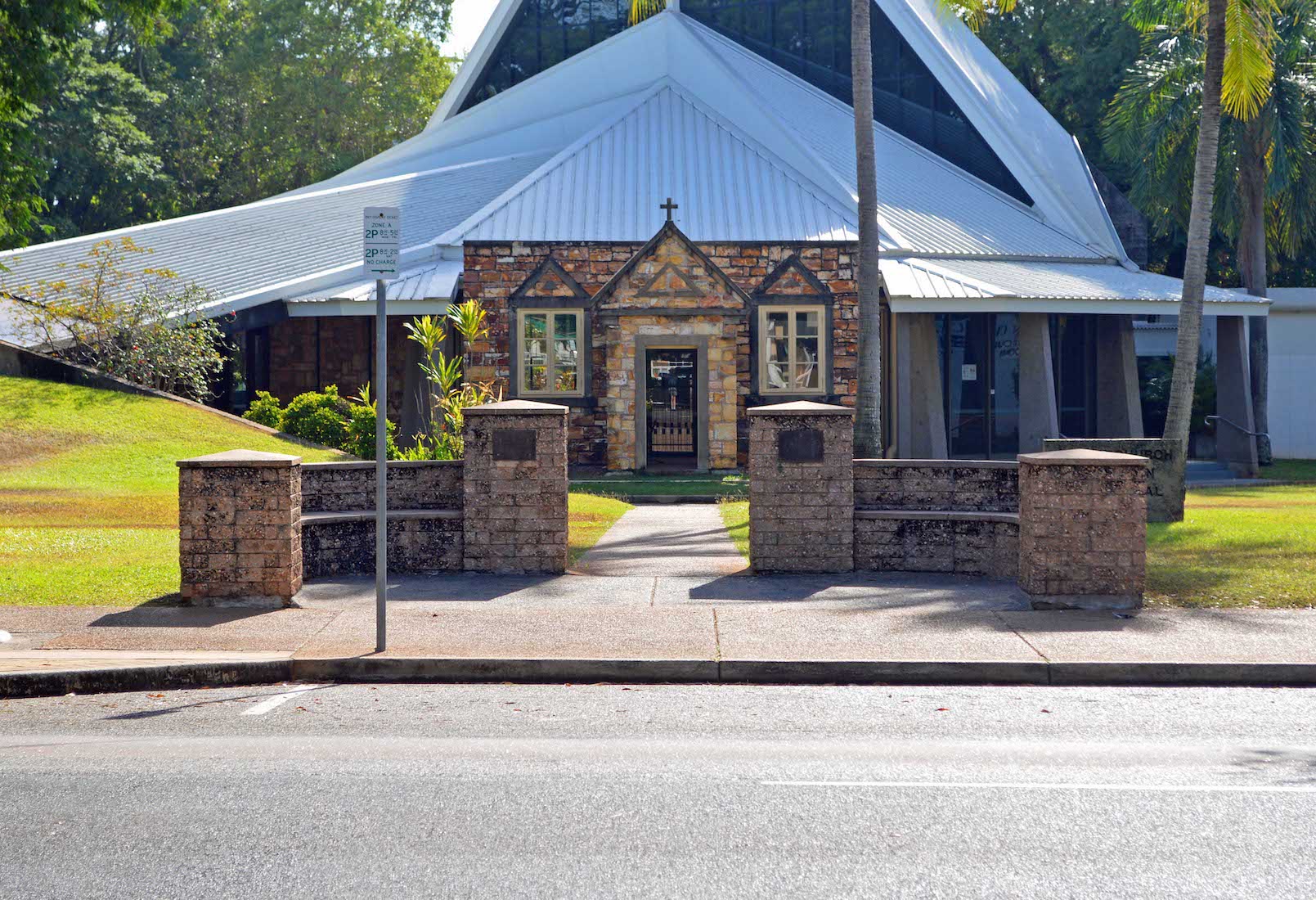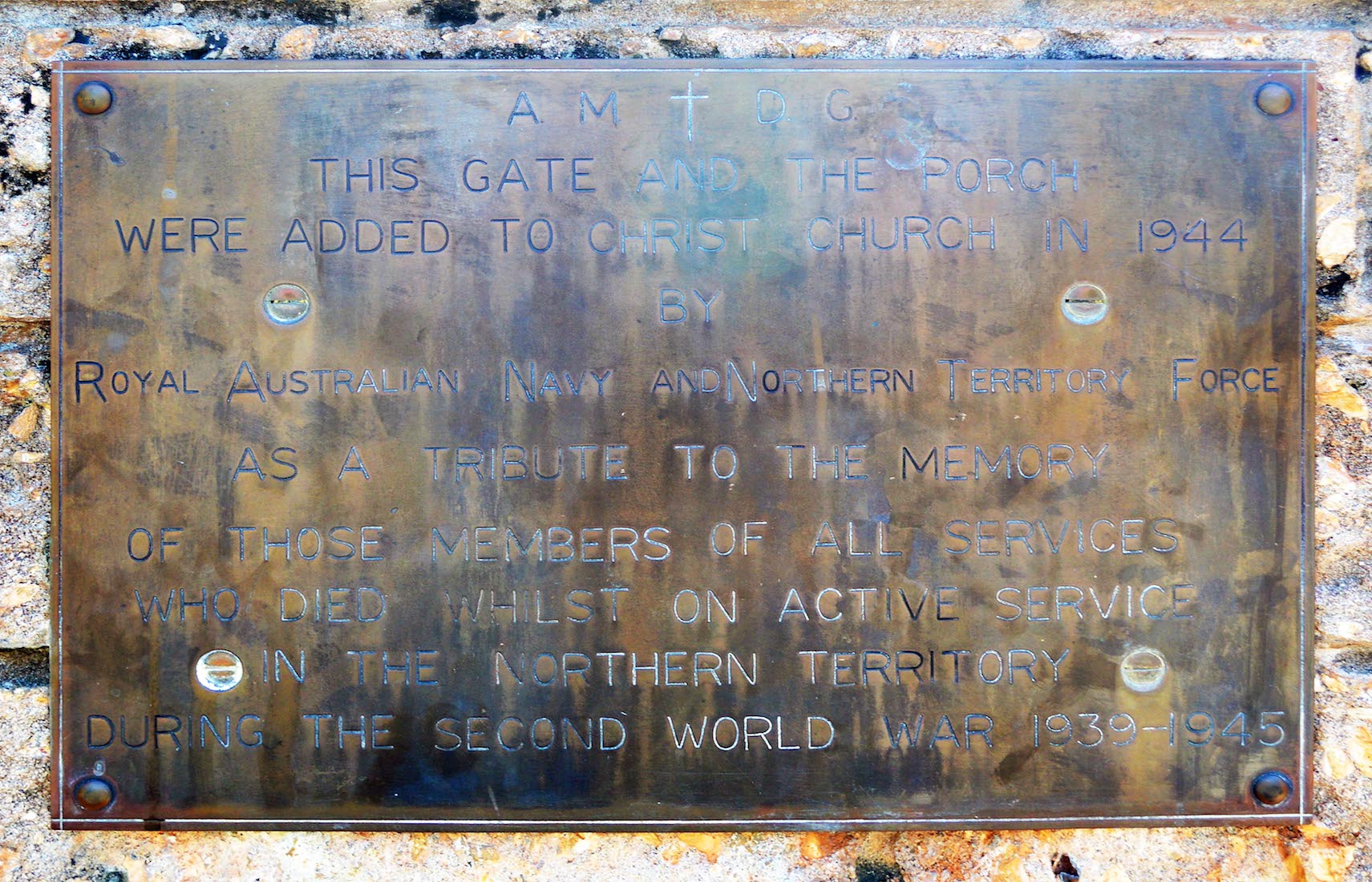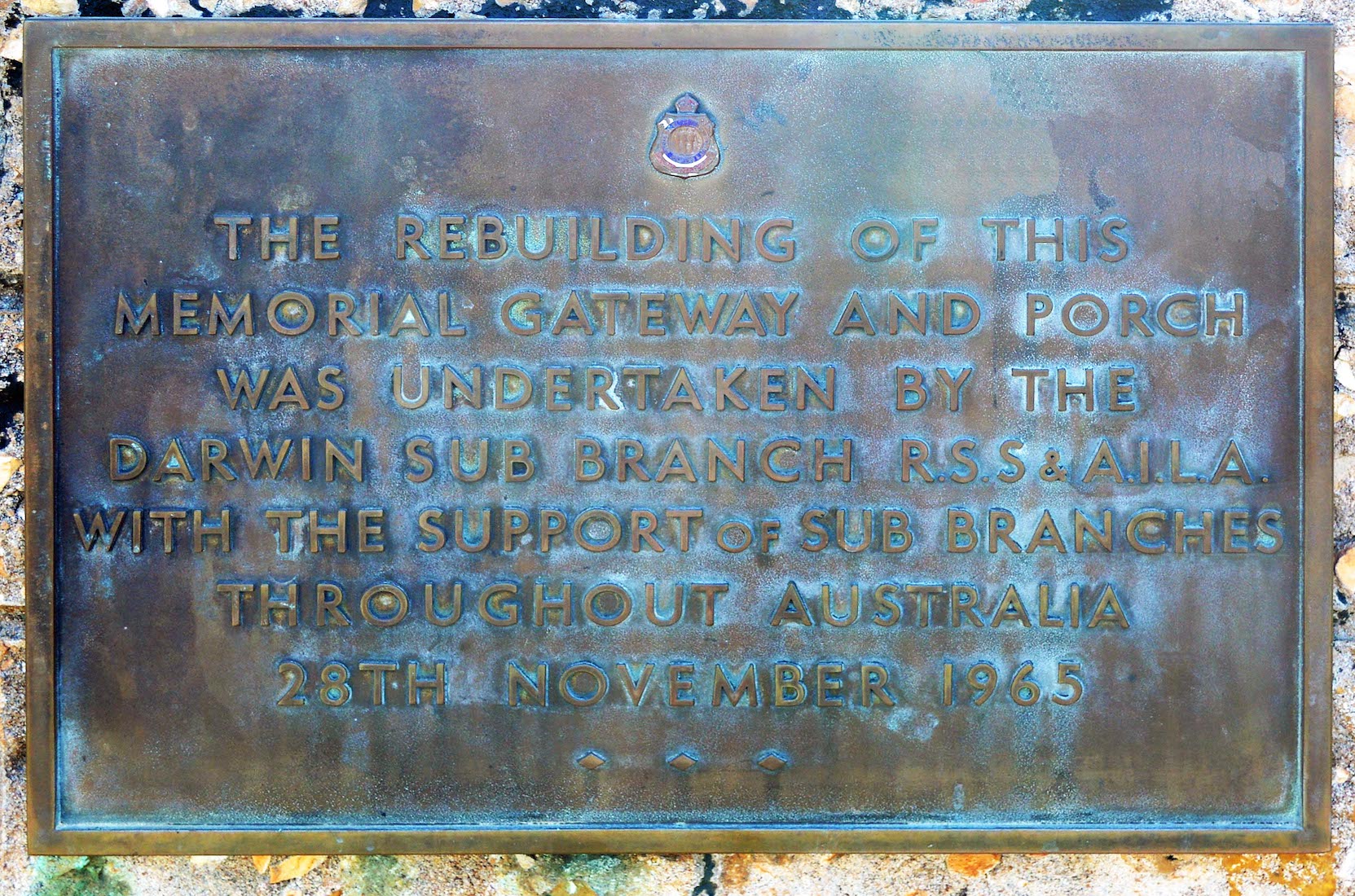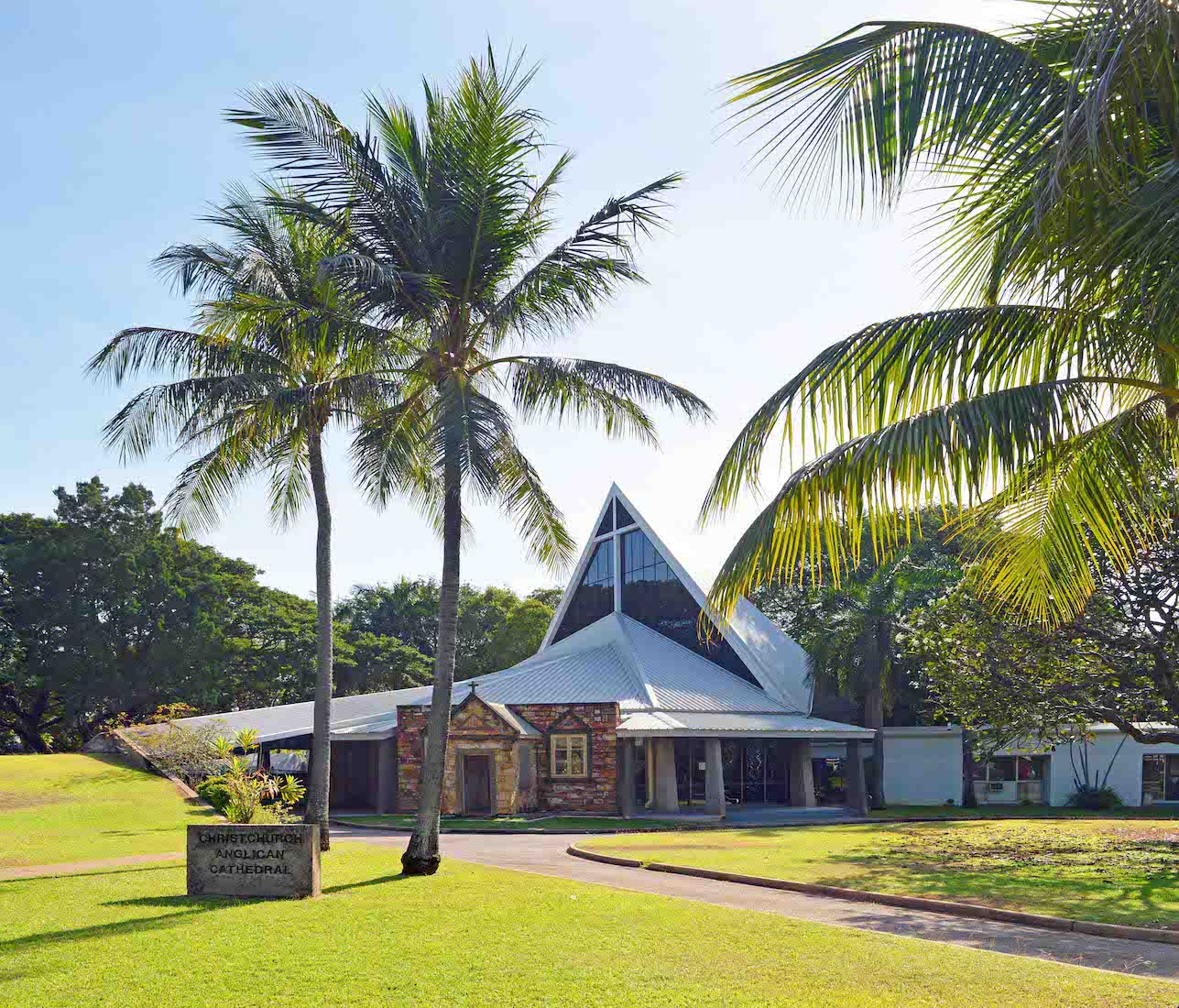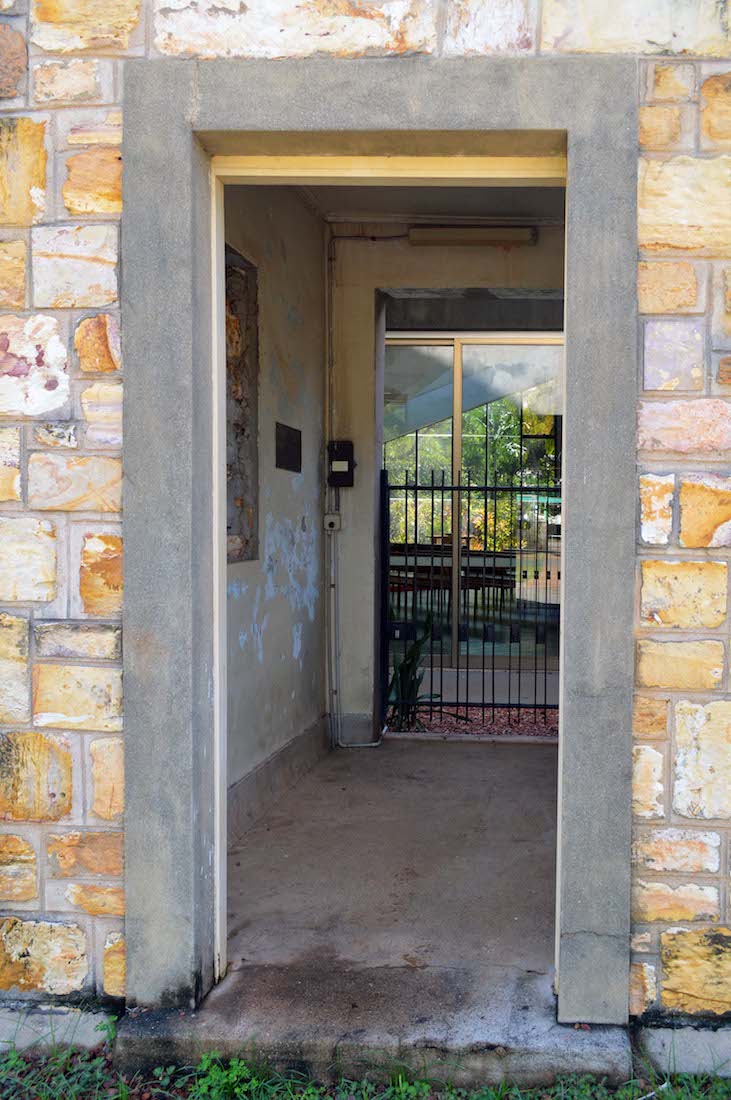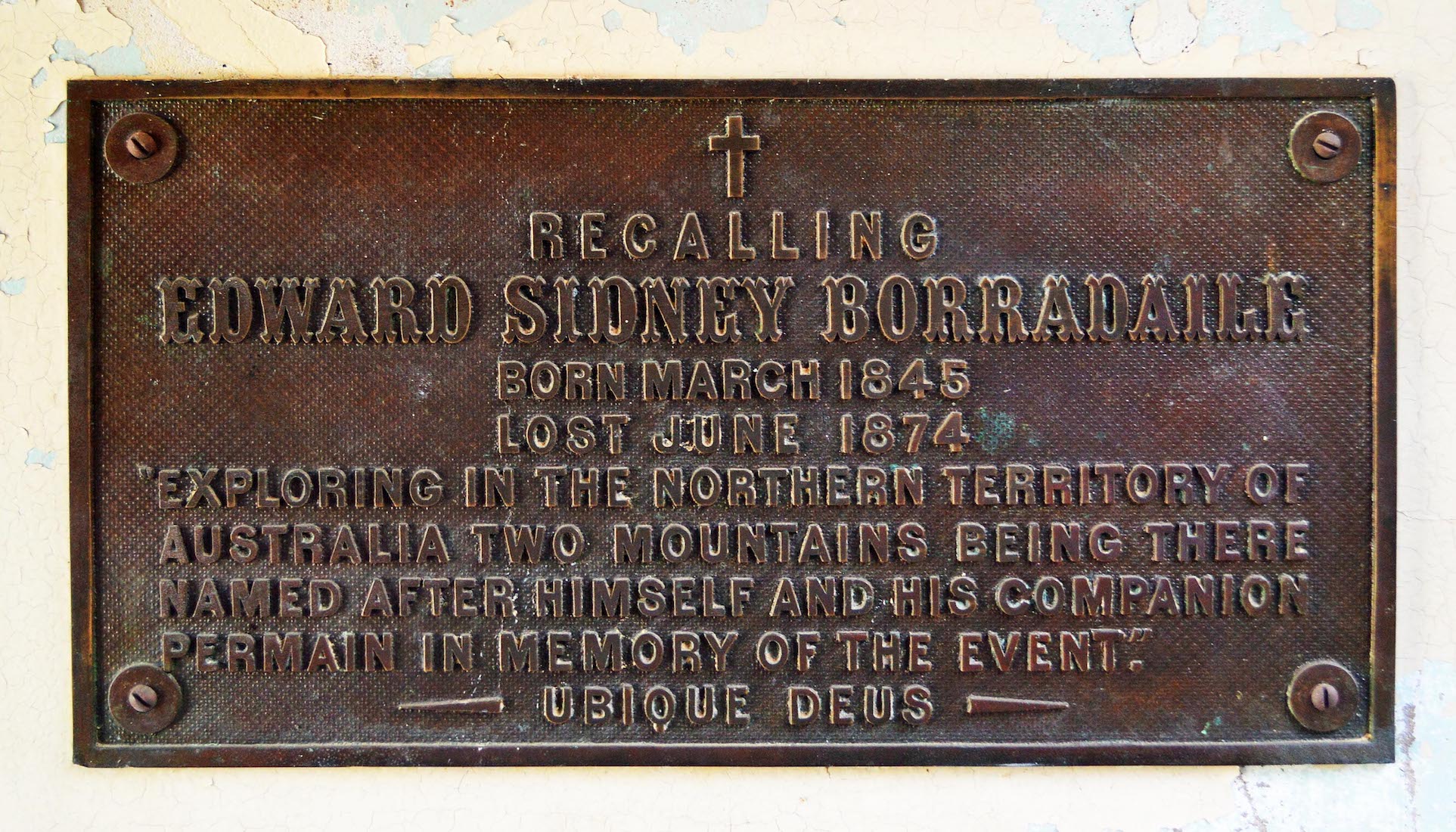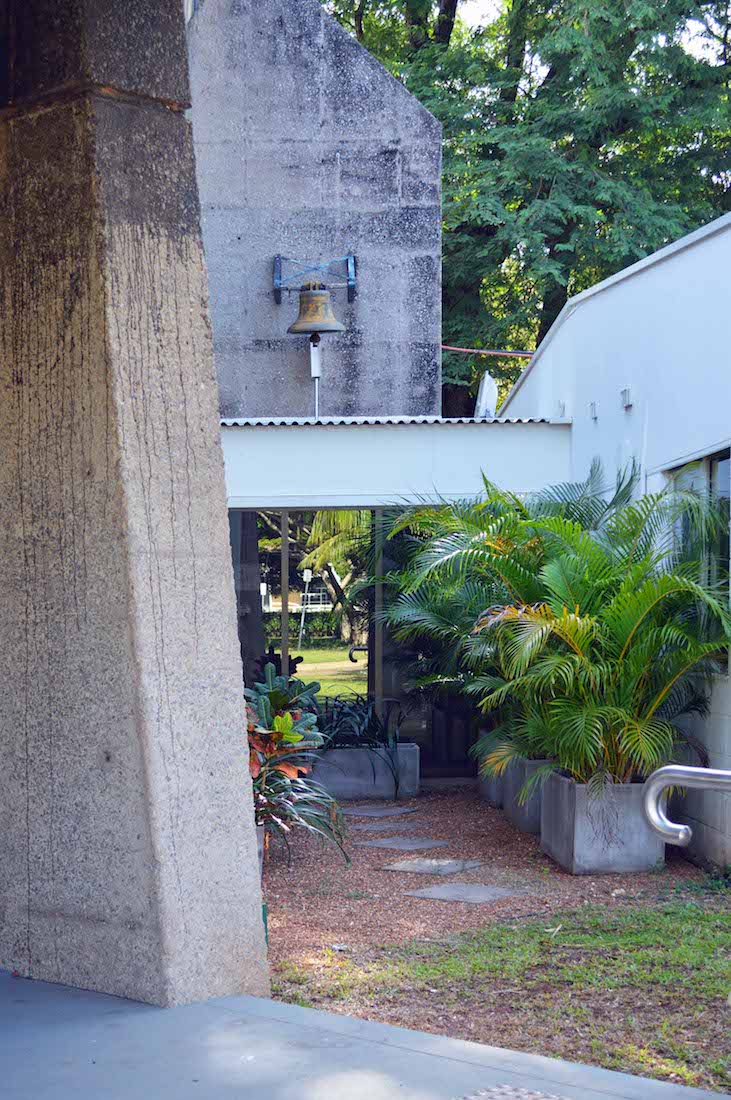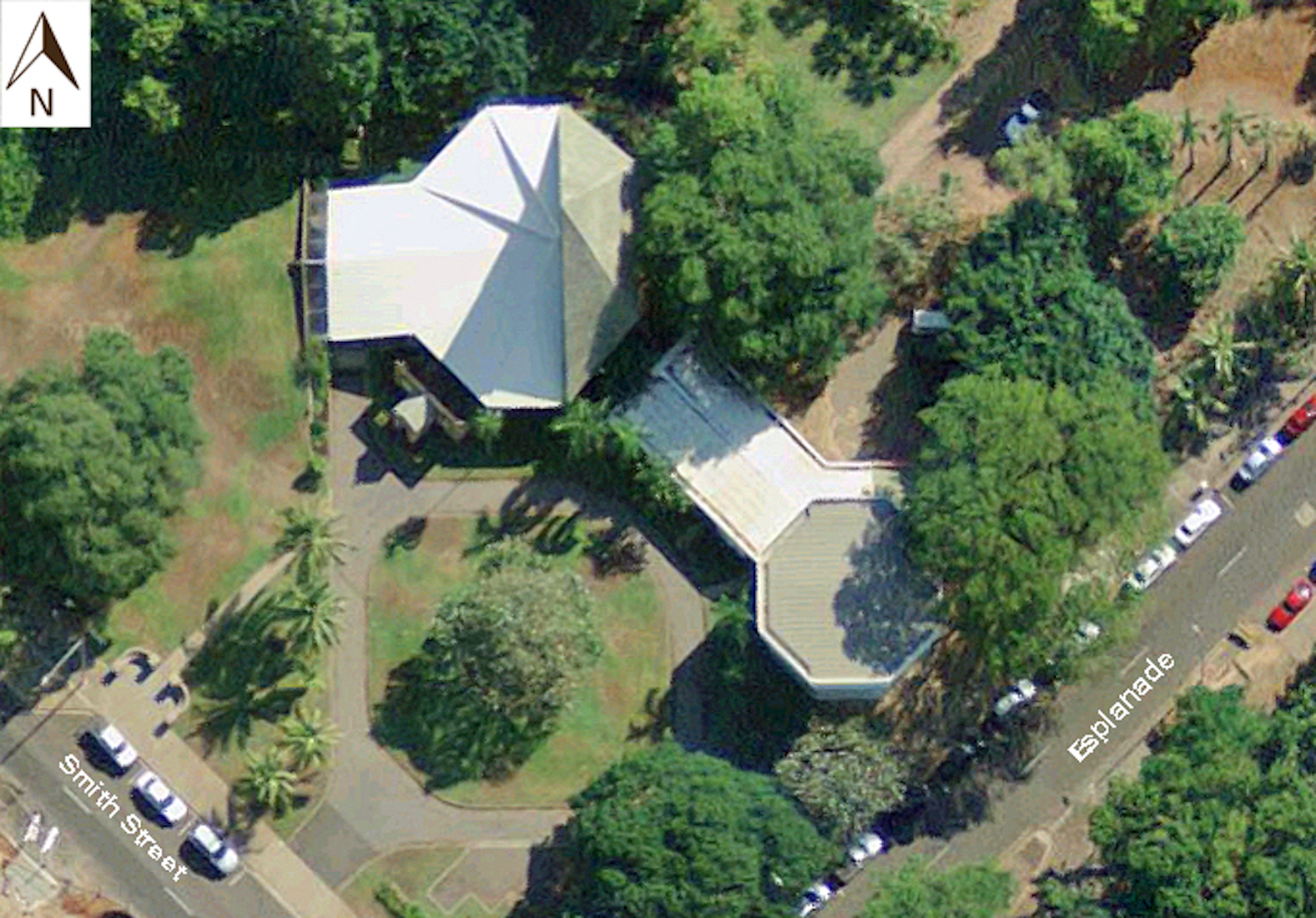
Christ Church Cathedral lies in a lovely park area bounded by Smith Street and The Esplanade. The building complex comprises the Cathedral auditorium and a large octagonal hall, connected by a diagonal link containing administrative and office space. The auditorium is oriented with its sanctuary due east geographically, so we can use our liturgical directions easily – even without the traditional cathedral shape! PLAN
2. VIEW FROM SOUTH
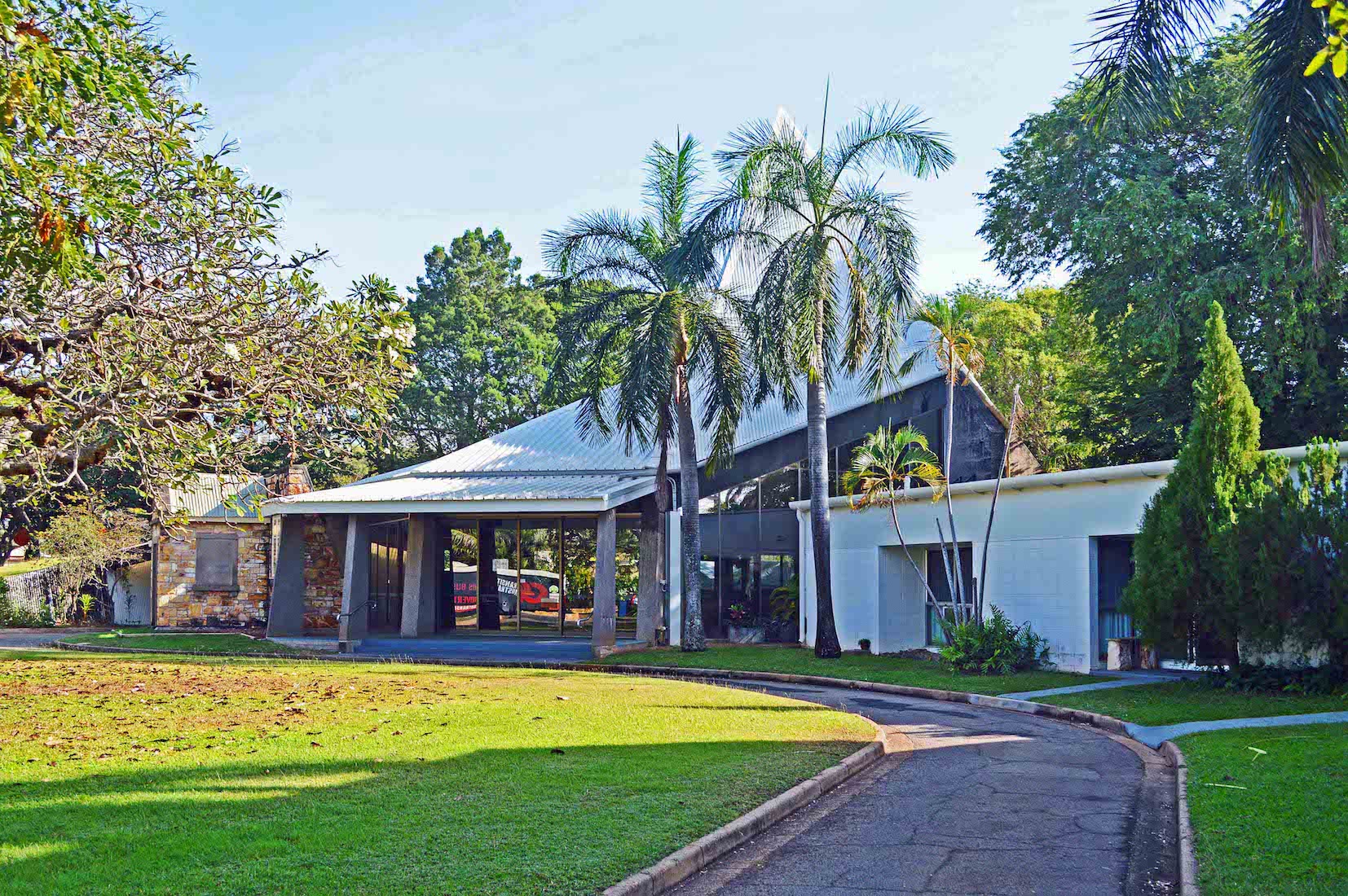
It is difficult to get a ‘feel’ of the Cathedral from this angle: there is the sweep of the sloping roof, broad expanses of clear glass, a small section of old brick which turns out to be the remains of the old Cathedral, and all surrounded by tropical foliage.
3. WEST VIEW
My usual plan is to circumnavigate around the exterior of a cathedral, but here I have to walk around the link and the hall, finally arriving back opposite the West wall. There must be something to see here, but it is mostly jungle!
4. WINDOW
Looking more closely we come to the exterior of the Cyclone Tracy window. The 1974 cyclone caused immense damage to Darwin, and resulted in a reported 71 deaths.
5. ABANDONED CROSS
Lying at the base of the West wall is a long abandoned cross. There might be a sermon here, somewhere ... .
6. NORTH WEST VIEW
The white gable rises triumphantly above the surrounding foliage.
7. GABLE AND PORCH
As we move around towards the West, we gain a better appreciation of the Cathedral structure with its Cross and surrounding porch.
8. TRIUMPHANT CROSS
We sing about Christ Triumphant, and reflect on how Christians are able to triumph in the power of Christ. This appears to be a recurring theme in the life of this Cathedral. During WWII Christ Church was used as a Garrison Church by the Defence Forces, and was badly damaged by bomb blasts during the first air raids on Darwin in 1942.
9. WEST VIEW
In early 1942 as the War approcahed closer, Church records and valuables were removed to Alice Springs for safe keeping. The move was timely as the 19th February 1942 Japanese raid saw the Church buildings damaged by shrapnel and the windows blown out. Shortly afterwards the building was looted.
10. BRIEF HISTORY
This information board gives interesting details of the life of Christ Church Cathedral. We read that the early Anglican community in Darwin was part of the Diocese of Carpentaria, based in Queensland. The original Church was built of local quarried stone, cost £435, and was completed in three months.
11. NOTICE BOARD
Cathedral notice boards sometimes reveal something of the vision of the community. This board gives details of service times, and indicates that the Church is open daily for prayer.
12. OLD AND NEW
The original Christ Church was built of porcellanite stone in the style of an old English country church designed for the tropics. When it was built in 1902 in the midst of Chinatown, it was intended as a Lady Chapel for a future Cathedral. Each gate post bears a plaque.
13. NORTH GATE POST PLAQUE
The plaque tells us that this gate and the rebuilt porch to the old Cathedral were added in 1944 by the Royal Australian Navy and Northern Territory Force as a tribute to the memory of all those who died in the Northern Territory during the Second World War 1939 – 1945.
14. SOUTH GATE POST PLAQUE
This plaque tells us that the rebuilding of the gateway and porch was undertaken by the Darwin sub-branch R.S.S. & A.I.L.A. with the support of sub-branches throughout Australia. 28th November 1965.
15. SOUTH WEST VIEW
This is one of the best views of Christ Church Cathedral. It indicates the tropical setting of the Cathedral as well as its links with the past.
16. OLD CHURCH GABLE
Although the old Church was consecrated in 1902, it was not until 1923 that electric lighting was installed. When Cyclone Tracy roared through Darwin in 1974, it destroyed all the original Church except for this old porch and the gateway.
17. ENTRY TO OLD PORCH
Going through the door into the old porch is not a source of great inspiration – not any in fact! – although there is a plaque inside.
18. PORCH PLAQUE
This plaque reads: Recalling Edward Sidney Borradaile Born March 1845 Lost June 1874 “Exploring in the Northern Territory of Australia Two mountains being there named after himself and his companion Permain in memory of the event.” Ubique Deus.
19. OLD BELL
Just where the new Cathedral joins the administration link, there is mounted a bell. I have no information concerning the history of this bell, or whether it is still in use.
20. TO THE ENTRY
If you approach Christ Church Cathedral from the wrong angle, it can be difficult finding the entrance. So from the South as here, one has to follow round the path at left past the old porch, to find the West wall and entry.


